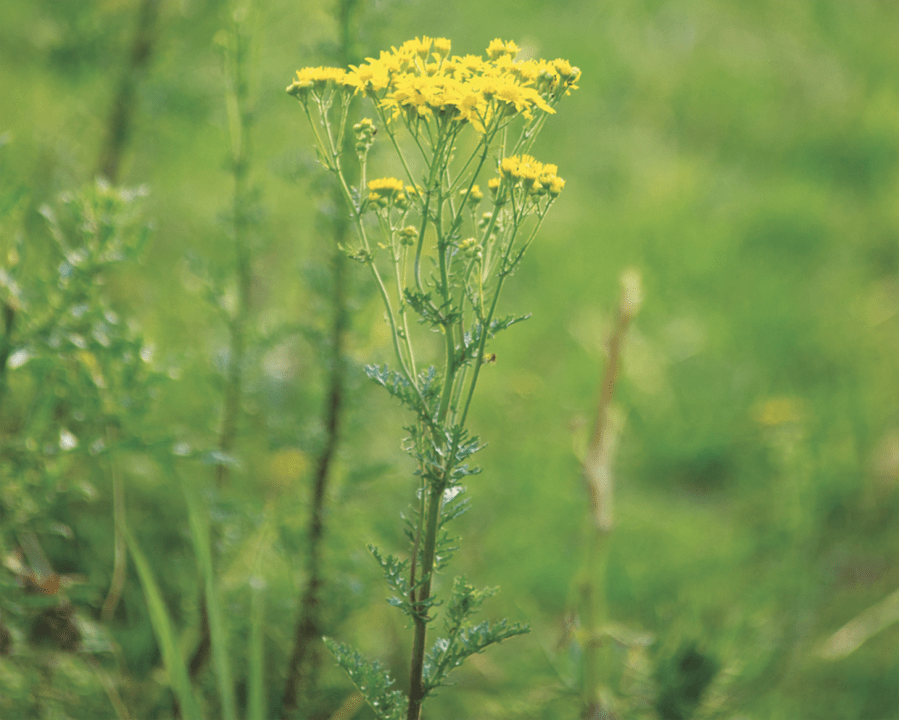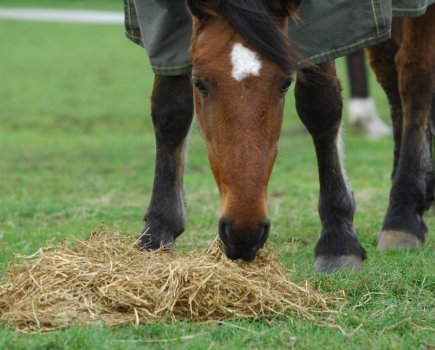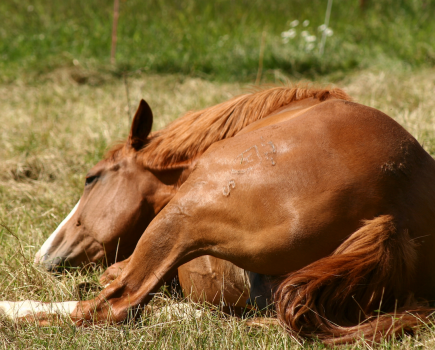Ragwort is a major cause of secondary photosensitisation, so keeping your paddocks clear of it as part of your regular horse care routine is vital for preventing the condition. Consuming this toxic plant can also trigger other serious health care concerns, including diarrhoea, weight loss and jaundice.
While intact, ragwort is generally unpalatable and horses don’t tend to eat it unless no alternative forage is available. However, it becomes much more palatable when it has been treated using a herbicide but hasn’t yet fully decomposed, or when it is cut and subsequently dries out.
So one of the main sources of exposure for horses is when ragwort is inadvertently incorporated into their hay or haylage.
Toxins in ragwort
Pyrrolizidine alkaloid, the toxin in ragwort, is generally a cumulative toxin. While a toxic dose may be eaten on one occasion, it’s much more common for a horse to consume a toxic dose over a longer period, even years.
The toxin causes irreparable damage to the liver, which can lead to fatal liver failure.
Clinical signs are often only apparent when more than 75% of the liver is affected. Signs can include:
- depression/lethargy/abnormal demeanour
- reduced appetite
- weight loss
- jaundice
- diarrhoea
- photosensitisation
Diagnosing ragwort poisoning
Diagnosis of ragwort poisoning is based on seeing compatible clinical signs, whether or not the horse has a history of grazing ragwort-infested pasture, plus blood tests and, ideally, a liver biopsy.
Treatment is generally of a palliative nature to keep the horse comfortable before eventual death.
The most effective way to protect a horse is by keeping their fields and surrounding areas clear of ragwort, as it can spread by the wind. Ragwort is rife in many parts of the UK, in gardens, on verges and even dominating the middle of roundabouts.
Learning what it looks for in its early stages as well as when it flowers is essential, so that it can be pulled up immediately.
It is important to note that all pulled ragwort should be destroyed correctly, ideally by burning, and never left in the field as dead ragwort is more likely to be eaten by horses and is just as big a threat to their health.
Main image: copyright Shutterstock








